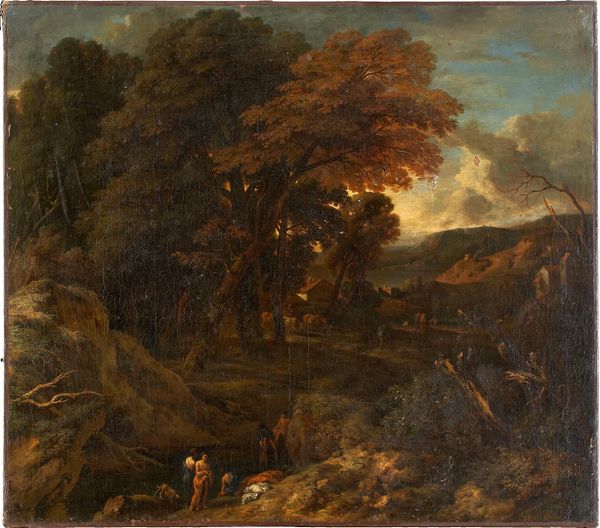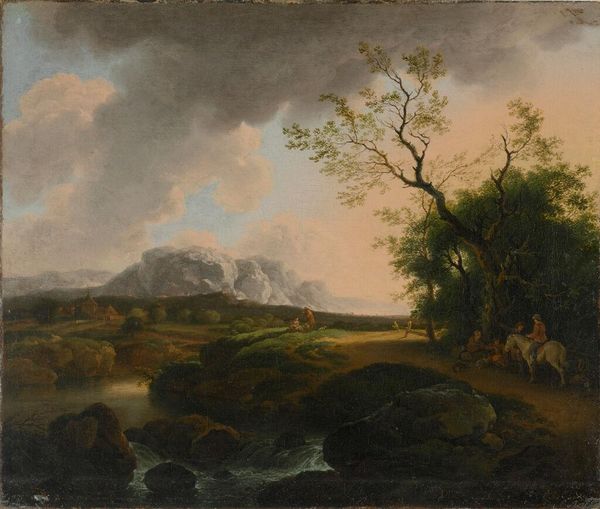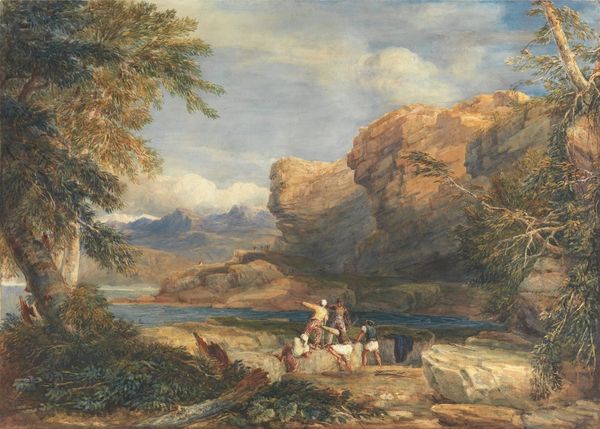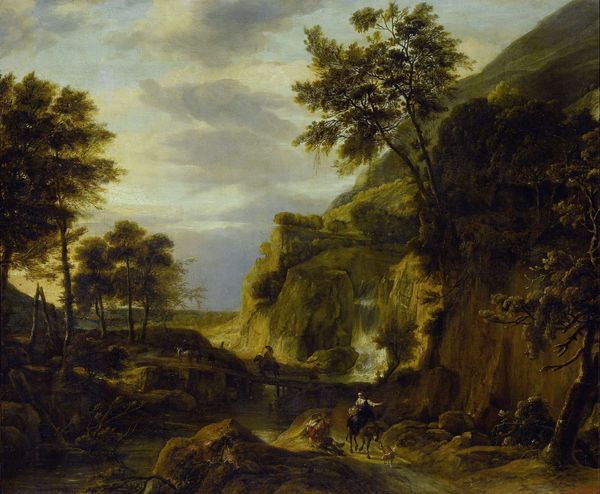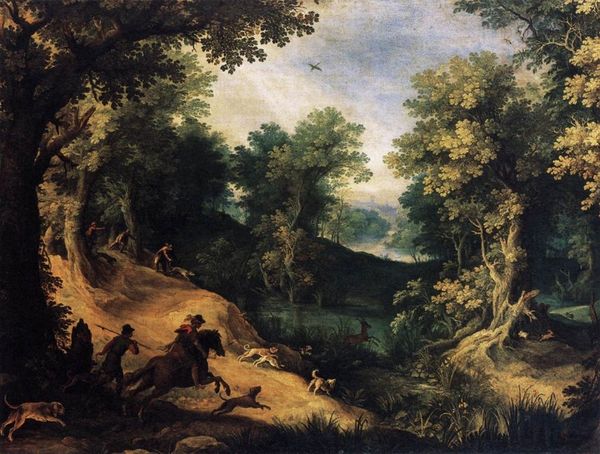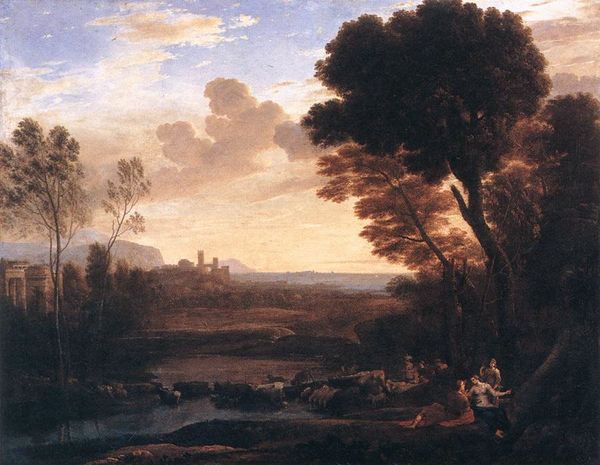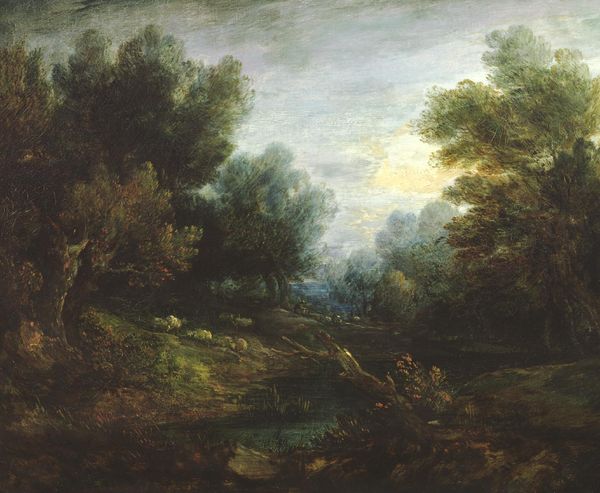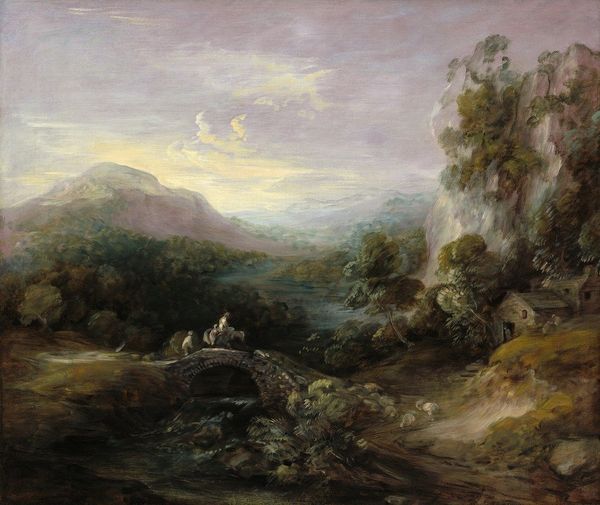
oil-paint
#
tree
#
baroque
#
oil-paint
#
landscape
#
oil painting
#
genre-painting
#
realism
Copyright: Public domain
Curator: There’s a remarkable sense of calm that washes over me when I view this canvas. "A Mountain Path," crafted around 1650 by Jan Dirksz Both, offers us a glimpse into the everyday life amidst the grandeur of the natural world. Editor: I find it a bit idealized. It certainly is peaceful, almost idyllic, but I wonder about the realities behind this scene, about who *isn't* pictured here. Curator: Interesting. Tell me more? What symbols or specific pictorial strategies trigger this sense of artifice for you? Editor: The almost casual groupings of people feel arranged, performing their labor or leisure a bit too consciously. I suppose what’s missing for me are the markers of social tension. What we are really looking at here is a landscape reflecting very particular social circumstances. Curator: Well, in this landscape tradition, you often find more profound ideas are frequently layered within such apparently quotidian scenes. Note, for instance, how Both positions these figures at a meeting point of light and shadow, and even obscures them from our clear sight behind the leaves. It can evoke humanity’s somewhat precarious relationship with nature and larger cycles. It's about where these figures are located in a vast, ordered world. Editor: Right, the Baroque aesthetic definitely plays with scale to diminish the human presence. These little figures along a humble road don’t have many options for mobility, really. The monumentality in the background suggests constraints too. The artist, here, presents land ownership as something ancient and timeless, as if such hierarchies were always already in place. Curator: Your reading brings attention to social dynamics. Looking closer at the people along the path can reveal more about that time period too. Each one and group is carefully portrayed with individual character as they journey within the vastness of it all, even seeking small moments of peace, the seated people near the water in the foreground. Those humble folk show a side of Dutch society that may not be visible from far away. It's where that culture's humanism shows. Editor: So you are pointing at Both making gestures toward capturing and recognizing the whole fabric of society? Fair enough. The careful depictions make that suggestion plausible and add more dimensions to a kind of artistic license I perceived earlier as “idealized.” Curator: Absolutely. It is in how an artist pulls disparate social elements, along with natural elements, together that new collective images about society’s self image can be considered and projected. In "A Mountain Path" these symbolic arrangements reflect a worldview, as an artifact reflecting how 17th-century Netherlands was picturing its own time. Editor: I’ll admit, seeing that intention complicates the politics here and reveals layers beyond that easy picturesque aesthetic that first caught my eye.
Comments
No comments
Be the first to comment and join the conversation on the ultimate creative platform.
